Introduction
HPCBOX delivers an innovative desktop-centric workflow enabled platform for users who want to accelerate innovation using cutting edge technologies that can benefit from High Performance Computing Infrastructure. It aims to make supercomputing technology accessible and easier to use for scientists, engineers and other innovators who do not have access to in-house datacenters or skills to create, manage and maintain complex HPC infrastructure. To achieve a high level of simplicity in delivering a productive HPC platform, HPCBOX leverages unique technology that not only allows users to create workflows combining their applications and optimization of underlying infrastructure into the same pipeline, but, also provides integration points to help third-party applications directly hook into its infrastructure optimization capability. Some of the unique capabilities of HPCBOX are:
Configuring ANSYS licenses
HPCBOX provides various graphical tools for the end user to configure ANSYS licenses themselves. Easy to use tools let users point their HPC cluster to an existing license server within their organization, or, install a license provided by ANSYS on the cluster itself. All network configuration required for the license server on the cluster are automated and performed with the click of a button.
Running ANSYS Fluent
ANSYS Fluent — is the most powerful computational fluid dynamics (CFD) software available — it’ll optimize your product’s performance faster. Fluent includes well-validated physical modeling capabilities that deliver reliable and accurate results across the widest range of CFD and multiphysics applications. Fluent also offers highly scalable high-performance computing (HPC) to help solve complex, large-model CFD simulations quickly and cost-effectively. Fluent can efficiently scale when run in distributed parallel mode and allows users to work on their models with its rich GUI interface along with providing batch execution capability. HPCBOX Cluster for ANSYS is delivered pre-installed and integrated with the latest versions of ANSYS (19.0.0, 19.1.0 and 2019R1 at the time of writing this article). HPCBOX’s rich desktop experience allows users to execute Fluent simulations with both its native GUI and in batch mode, as preferred by the user. HPCBOX’s elastic scale-in/scale-out capability lets users control the underlying HPC infrastructure themselves, with no support required from HPC administrators. Furthermore, this can be done without writing a single line of code or executing a single console command.
Workflow with HPCBOX CLUSTER APP
HPCBOX provides a rich GUI application called hpcbox-cluster-app to create and execute workflows combining infrastructure control and application execution.
In the first step of the workflow shown above, we scale out the cluster by adding 8 nodes with 16 cores each. Each node has the following properties:
Intel E5-2667 V3 3.2 GHz (with turbo up to 3.5 GHz) 112 GB DDR4 RAM Interconnect: FDR Infiniband
In the second workflow step we start ANSYS Fluent on 128 cores.Once the workflow is executed, HPCBOX will start 8 nodes and once the nodes are ready, automatically start Fluent with its GUI.
In the final Workflow step above, once the Fluent application has completed execution, HPCBOX will scale-in the cluster by deleting the compute nodes that were added in Step-1.
HPCBOX Connector to ANSYS Workbench
ANSYS Workbench is ANSYS’s Integrated Engineering Simulation Platform. It combines the strength of ANSYS’s simulation tools with the tools necessary to manage user projects and create simulation workflows combining different ANSYS applications. HPCBOX Connector The HPCBOX Connector for ANSYS Workbench is a custom component system which can be loaded directly into ANSYS Workbench and delivers HPCBOX’s cluster optimization and elasticity technology directly in Workbench. The connector brings close integration between the underlying HPC infrastructure and the user workflows created in Workbench.
In the above example workflow, we see an ANSYS Workbench workflow which scales-out the HPC cluster, runs the CFX solver and scales-in the cluster once the solver execution is complete.
Visualization on HPCBOX
HPCBOX delivers hardware accelerated remote 3D utilizing NVIDIA GPUs. Applications such as, DesignModeler, ANSYS Meshing, CFD-Post can offload 3D rendering to NVIDIA graphics cards and users can perform their pre/post processing tasks directly on the cluster, helping eliminate much of the data transfer operations.
Conclusion
HPCBOX delivers a highly personalized, rich HPC experience for users of ANSYS applications. The platform is suitable for both small and large enterprises alike; engineers from SMEs who do not have access to a HPC resource or skilled HPC personnel in-house can benefit from a self-serviced user experience for HPC and engage Drizti’s HPC support and skills to augment their innovation with ANSYS and HPC. Larger enterprises can make use of HPCBOX to tap into additional HPC capacity in times of peak need when time to delivery is critical and procuring, provisioning and setting up additional HPC resources would contribute to delays in project deliveries.
Getting Access and Trial
Please contact Drizti to get a demo and trial of the HPCBOX Platform for ANSYS applications. We'd also like to get any feedback you might have for us. All third-party product and company names are trademarks or registered trademarks of their respective holders. Use of them does not imply any affiliation or endorsement by them.
Introduction
HPCBOX delivers an innovative desktop-centric workflow enabled platform for users who want to accelerate innovation using cutting edge technologies that can benefit from High Performance Computing Infrastructure. It aims to make supercomputing technology accessible and easier to use for scientists, engineers and other innovators who do not have access to in-house datacenters or skills to create, manage and maintain complex HPC infrastructure. To achieve a high level of simplicity in delivering a productive HPC platform, HPCBOX leverages unique technology that not only allows users to create workflows combining their applications and optimization of underlying infrastructure into the same pipeline, but, also provides integration points to help third-party applications directly hook into its infrastructure optimization capability. Some of the unique capabilities of HPCBOX are:
Docker Support
HPCBOX is probably the first HPC Cloud platform to support MPI, OpenGL and CUDA Docker containers on the same platform, letting users create, manage, deploy and execute their entire application pipelines with Docker containers. Unique capabilities offered by HPCBOX for Docker:
CUDA Applications
Applications which use CUDA for computation can be built as Docker containers and pulled on to the HPCBOX cluster from public and private Docker registries. Multiple instances of these containers can be launched at the same time, in both exclusive and non-exclusive mode. When using exclusive mode, one instance of the Docker container is started on every node eligible to handle CUDA computations. All instances receive an environment variable, HPCBOX_TASK_ID, set to their instance id. This variable can be used for monte-carlo type simulations which run multiple instances of the same application, albeit, with different input files for each instance.
OpenGL Applications
Visualization applications need hardware accelerated OpenGL capability for optimum user experience. HPCBOX has extended its remote hardware accelerated graphics technology to support OpenGL applications which are packaged as Docker containers. With this innovation, users can pull in and launch any OpenGL application which can use NVIDIA graphics cards. The HPCBOX platform will make sure the NVIDIA graphics card is made visible within the container during execution time. Furthermore, applications like Paraview with the NVIDIA IndeX plugin can be seamlessly run in client server mode within HPCBOX’s rich desktop experience.
MPI Applications
Docker containers with compatible MPI applications can be launched on a high-speed Infiniband fabric on the HPCBOX platform. Users can build MPI applications on their local workstations and pull them on to the HPCBOX platform for running at scale. Alternatively, users can use the HPCBOX platform for creating their MPI applications and push them to other locations using their Docker registries.
Pulling Docker Images
HPCBOX provides an easy to use tool to pull Docker images from public and private repositories, including Docker Hub and NVIDIA GPU Cloud Container Registry (NGC). Multiple remote registries can be configured for pulling images.
Conclusion
HPCBOX delivers a highly personalized, workflow-enabled rich desktop experience for HPC users. This experience combined with support for Docker containers makes our HPC Cloud platform extremely flexible and one of the most innovative platforms available today, taking us closer in realizing our vision of:
One HPC Cloud Platform
Any Application
Getting Access and Trial
Please contact Drizti to get a personalized webinar, demo and trial of the HPCBOX Platform for Docker. We'd also like to get any feedback you might have for us. Ready to try ? Get HPC Cloud for Docker on the Microsoft Azure Marketplace. ALL THIRD-PARTY PRODUCT AND COMPANY NAMES USED IN THIS DOCUMENT ARE TRADEMARKS™ OR REGISTERED® TRADEMARKS OF THEIR RESPECTIVE HOLDERS. USE OF THEM DOES NOT IMPLY ANY AFFILIATION WITH OR ENDORSEMENT BY THEM.
HPCBOX™
HPCBOX is a desktop centric, workflow oriented HPC cloud platform built and delivered on Microsoft Azure. HPCBOX provides intelligent workflow capability that lets seamless plug-in of cloud infrastructure into your application pipeline giving fine grained control on your HPC cloud resources and applications. The platform combines cloud infrastructure, applications and managed services to bring supercomputer technology to your personal computer. SU2 SU2 is an open-source collection of software tools written in C++ and Python for the analysis of partial differential equations (PDEs) and PDE-constrained optimization problems on unstructured meshes with state-of-the-art numerical methods. SU2 is a leading technology for adjoint-based optimization. Through the initiative of users and developers around the world, SU2 is now a well-established tool in the computational sciences with wide applicability to aeronautical, automotive, naval, and renewable energy industries, to name a few. Source:https://su2code.github.io/ Unique Capabilities HPCBOX cluster for SU2 includes SU2 6.1.0 Falcon, pre-installed and integrated to run in distributed parallel mode over a high speed Infiniband fabric on Microsoft Azure. Along with SU2, Gmsh and Paraview are available for use with hardware accelerated remote 3D support. Users can create and execute their simulation workflows with the rich desktop experience provided by HPCBOX, the same way they would do on their personal computers. Some of the unique capabilities offered by HPCBOX are: Fine-grained control over HPC resources HPCBOX provides real elasticity to HPC environments on the cloud, resources can be added, removed, shutdown and started on-demand, or, as part of the simulation pipeline.
Remote 3D
Visualization is an important aspect of simulation engineering. HPCBOX delivers hardware accelerated remote 3D, allowing users to perform their post processing activities directly on the HPC cluster in the cloud. This is made possible with the use of Azure’s NVIDIA equipped GPU nodes for visualization and HPCBOX’s hardware accelerated remote graphics capability. Secure All access to the cluster, including file transfers is over a secure channel giving users the best possible industry standard protection for their HPC activities. Rich Desktop Experience HPCBOX delivers a rich desktop experience avoiding the use of complicated web forms and command line tools for simulation management and execution. This lets users maximize their use of HPC resources and gives them much more freedom in how they work with simulation engineering and virtual prototyping.
Learn More
To learn more about HPCBOX and its capabilities, visit HPCBOX. Feel free to contact Drizti for more information on how to accelerate your product development with HPCBOX. All third-party product and company names are trademarks or registered trademarks of their respective holders. Use of them does not imply any affiliation or endorsement by them.
OpenFOAM
OpenFOAM is free, open source software for CFD from the OpenFOAM Foundation. Unique Capabilities HPCBOX cluster for OpenFOAM has both v5 and v6 of OpenFOAM pre-installed and integrated to run in distributed parallel mode over a high speed Infiniband fabric on Microsoft Azure. Users can create and execute their simulation workflows with the rich desktop experience provided by HPCBOX, the same way they would do on their personal computers. Some of the unique capabilities offered by HPCBOX are: Fine-grained control over HPC resources HPCBOX provides real elasticity to HPC environments on the cloud, resources can be added, removed, shutdown and started on-demand or as part of the simulation pipeline.
Remote 3D
Visualization is an important aspect of simulation engineering. HPCBOX delivers hardware accelerated remote 3D, allowing users to perform their post processing activities directly on the HPC cluster in the cloud. This is made possible with the use of Azure’s NVIDIA equipped GPU nodes for visualization and HPCBOX’s hardware accelerated remote graphics capability.
Secure
All access to the cluster, including file transfers is over a secure channel giving users the best possible industry standard protection for their HPC activities. Rich Desktop Experience HPCBOX delivers a rich desktop experience avoiding the use of complicated web forms and command line tools for simulation management and execution. This lets users maximize their use of HPC resources and gives them much more freedom in how they work with simulation engineering and virtual prototyping.
Learn More
To learn more about HPCBOX and its capabilities, visit HPCBOX Feel free to contact Drizti for more information on how to accelerate your product development with HPCBOX. All third-party product and company names are trademarks or registered trademarks of their respective holders. Use of them does not imply any affiliation or endorsement by them. |

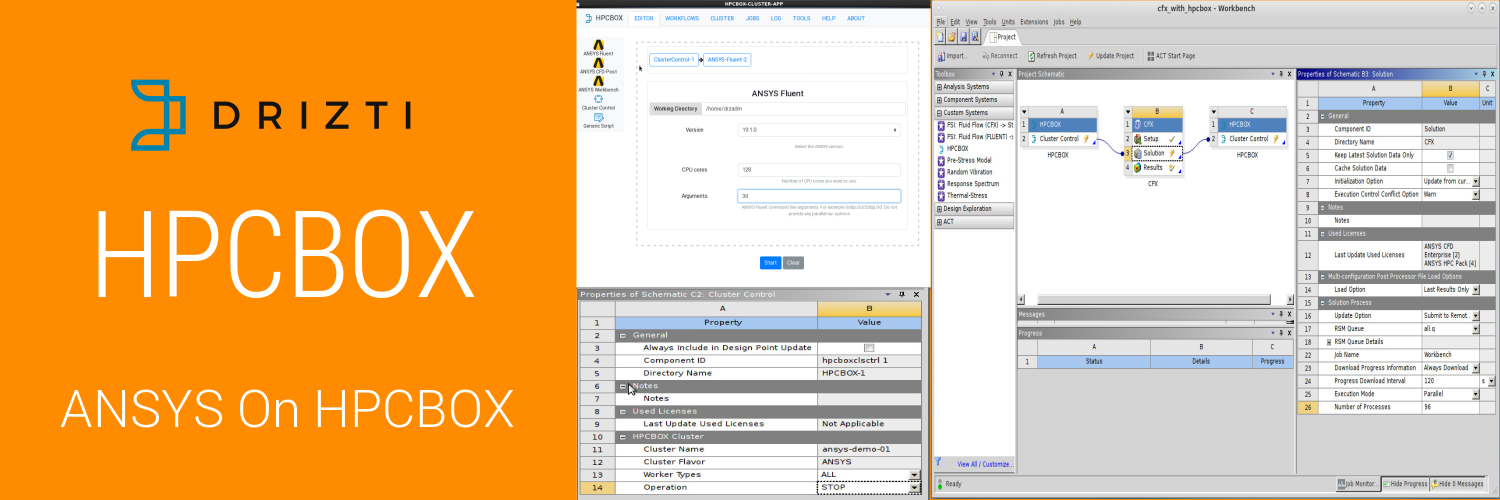
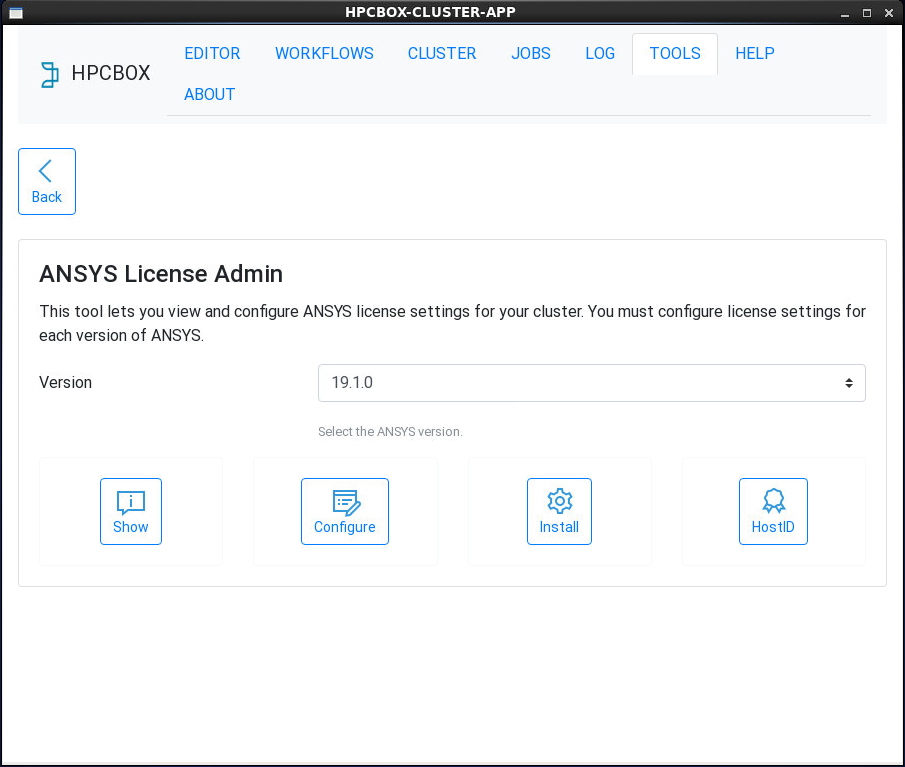
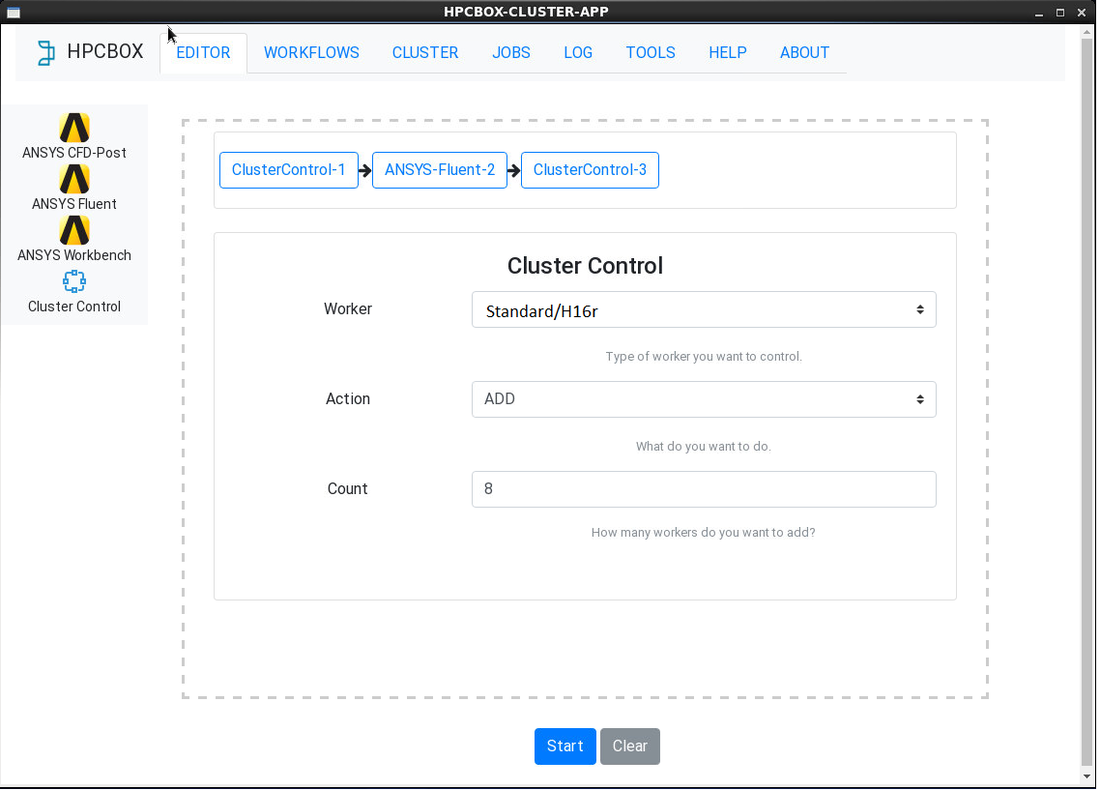
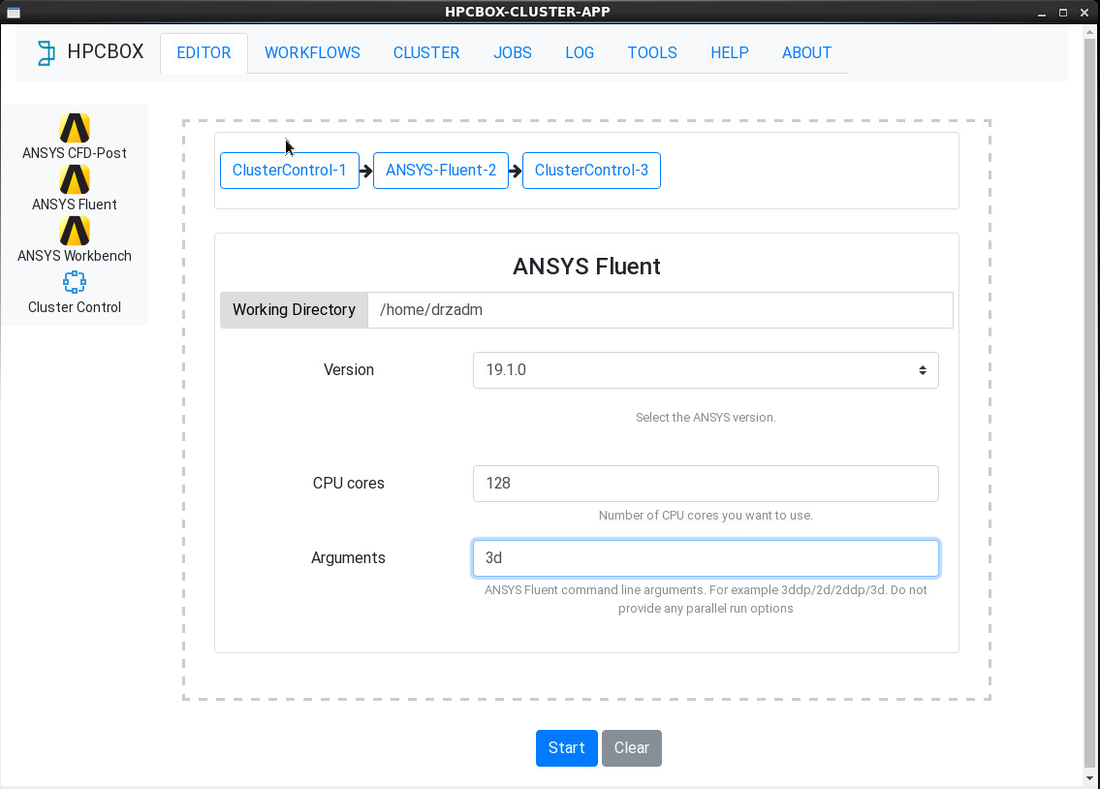
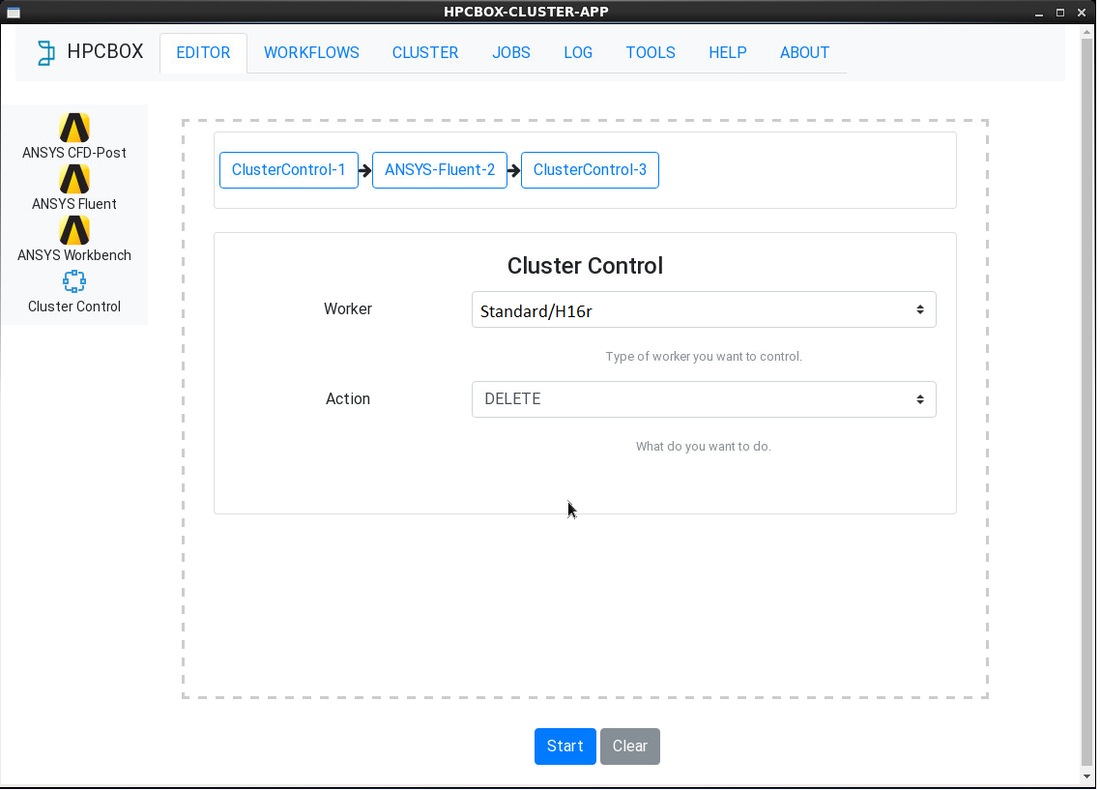
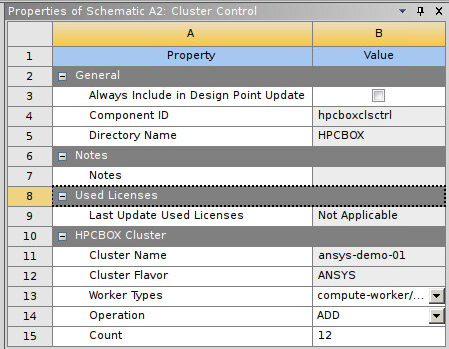

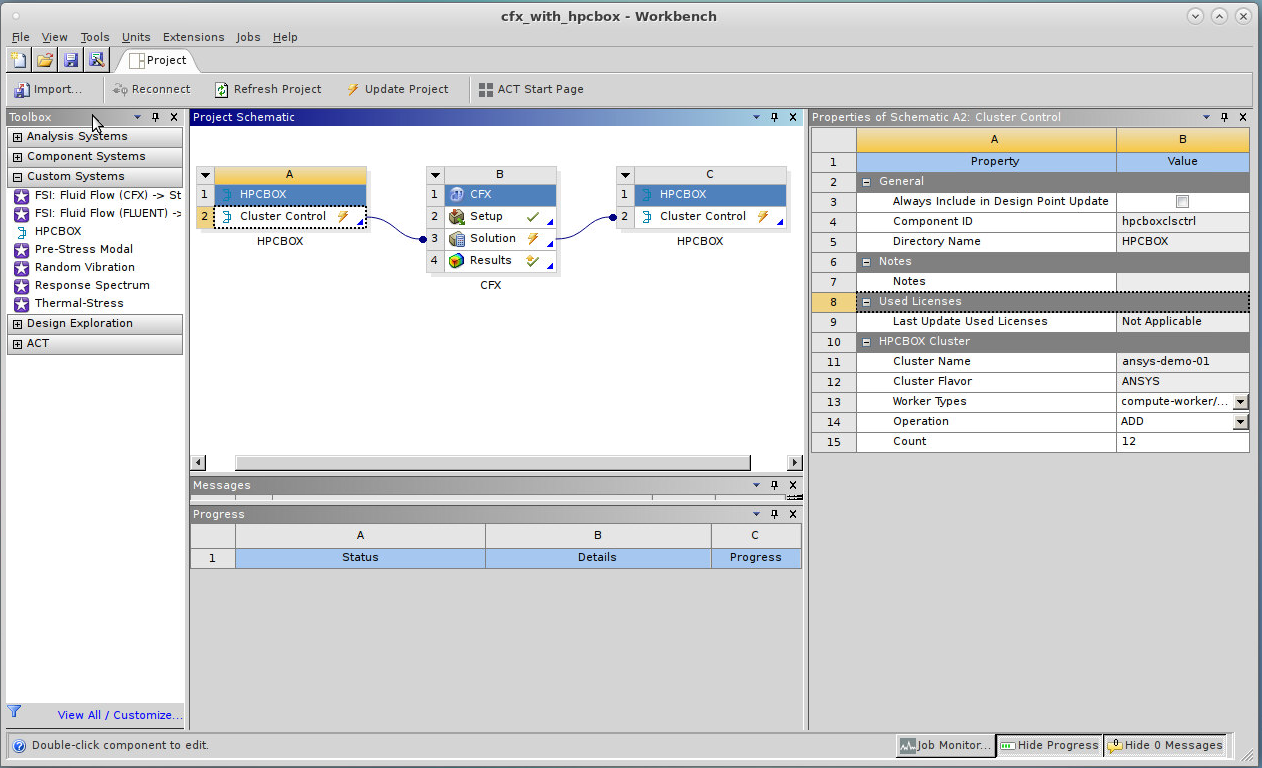
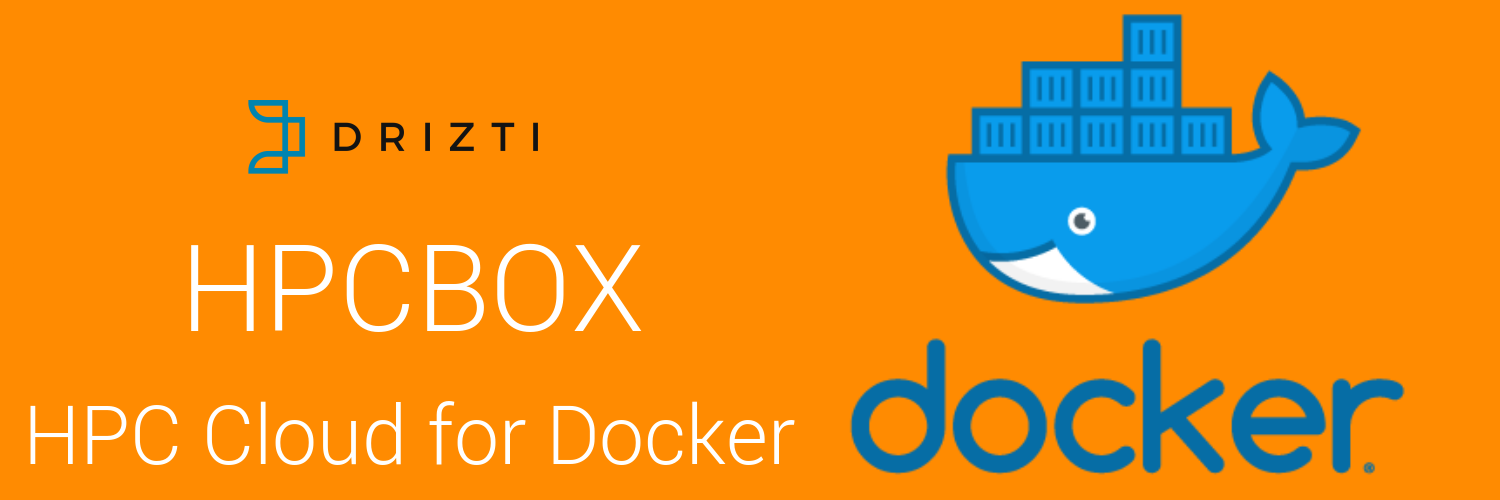
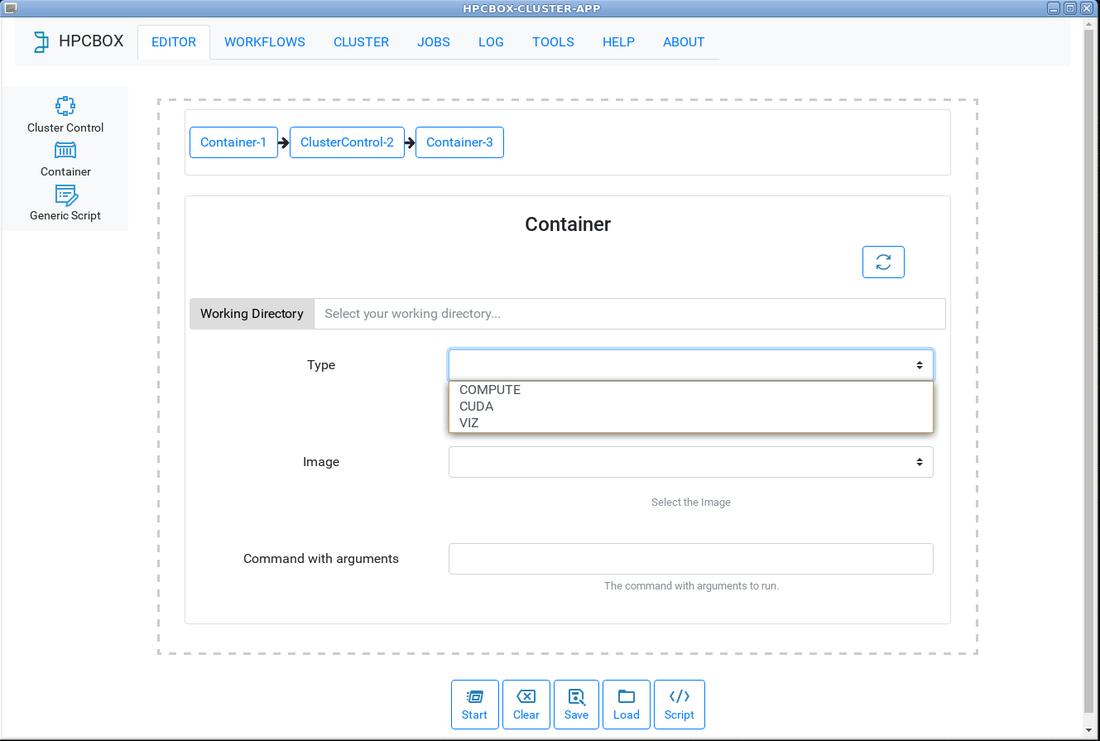
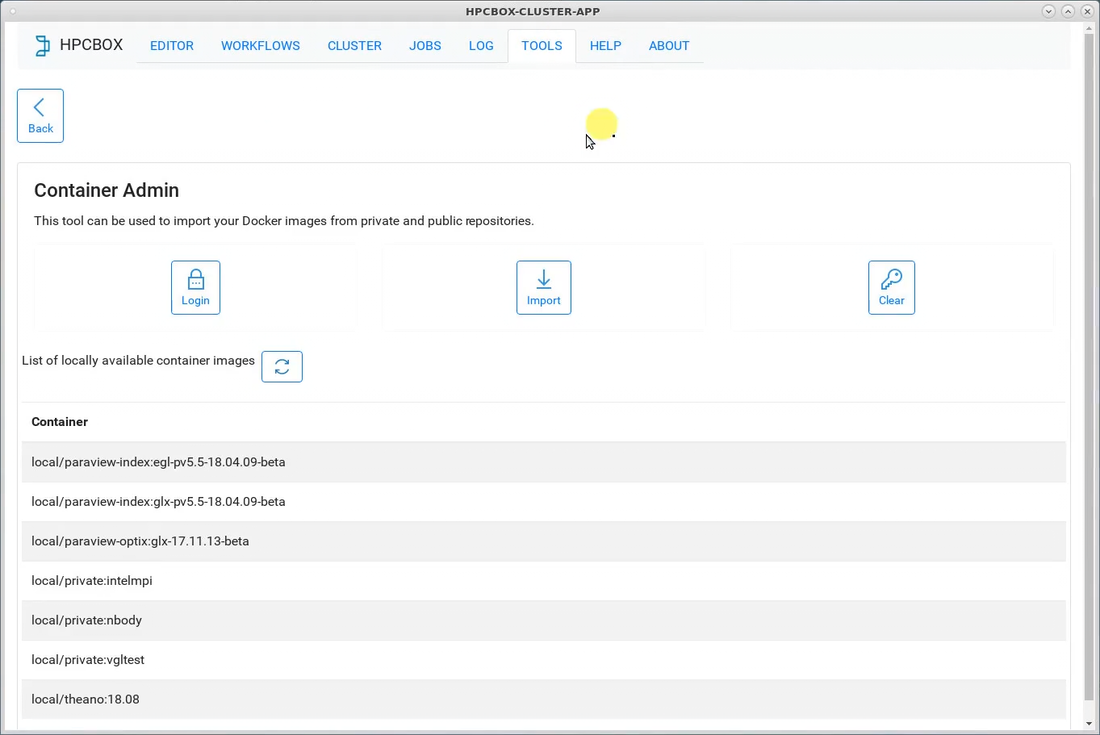
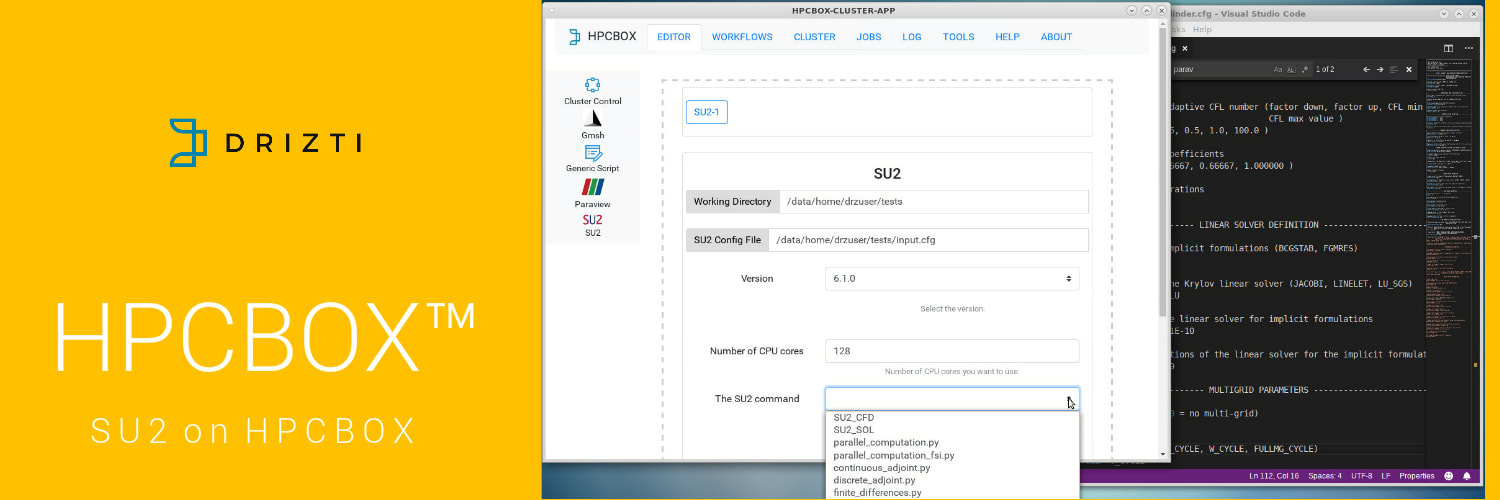
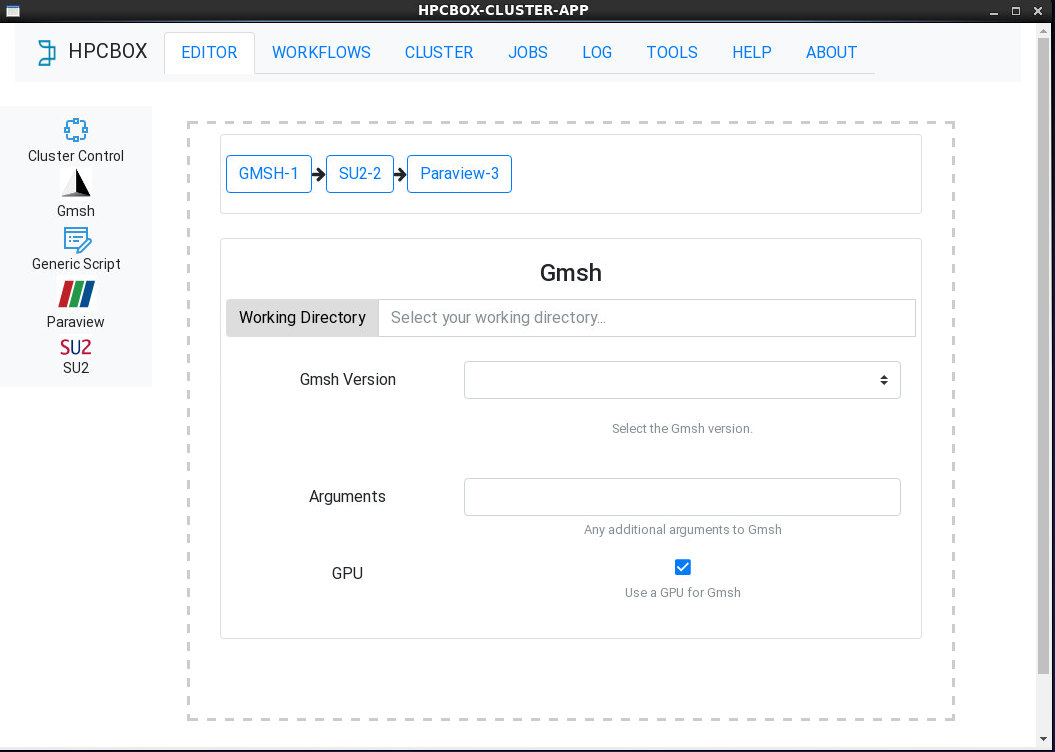
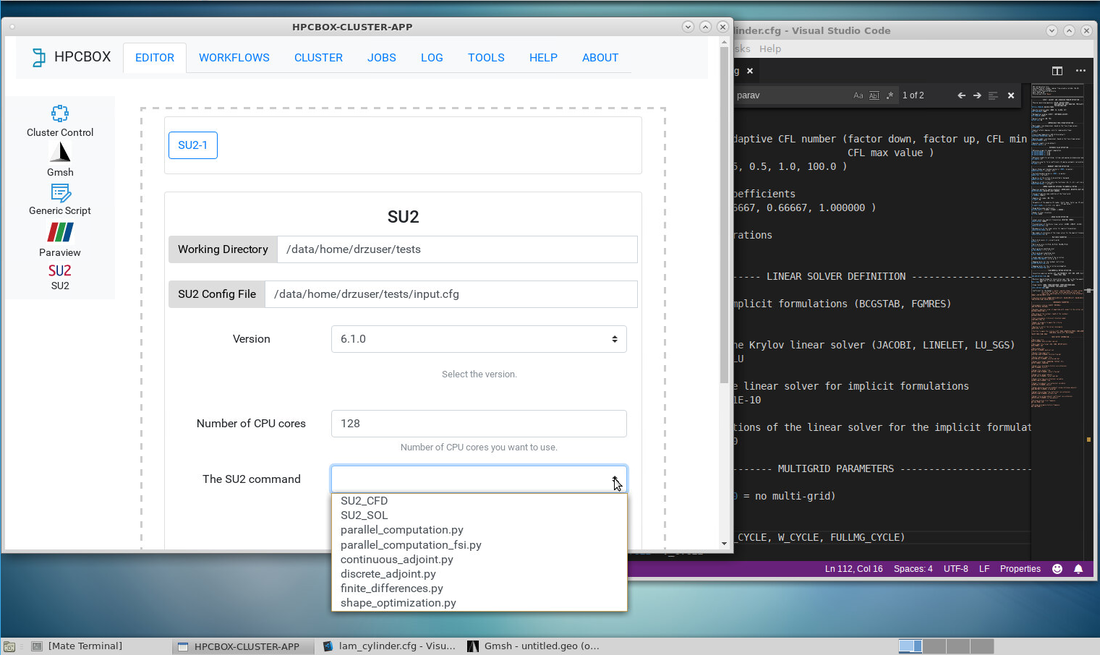
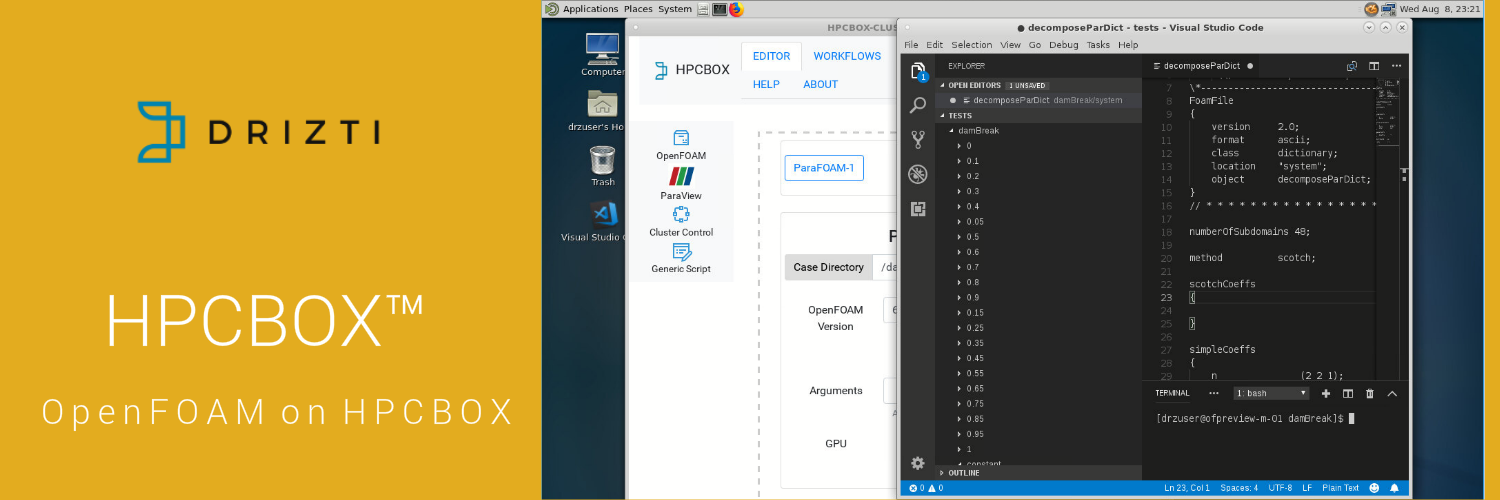
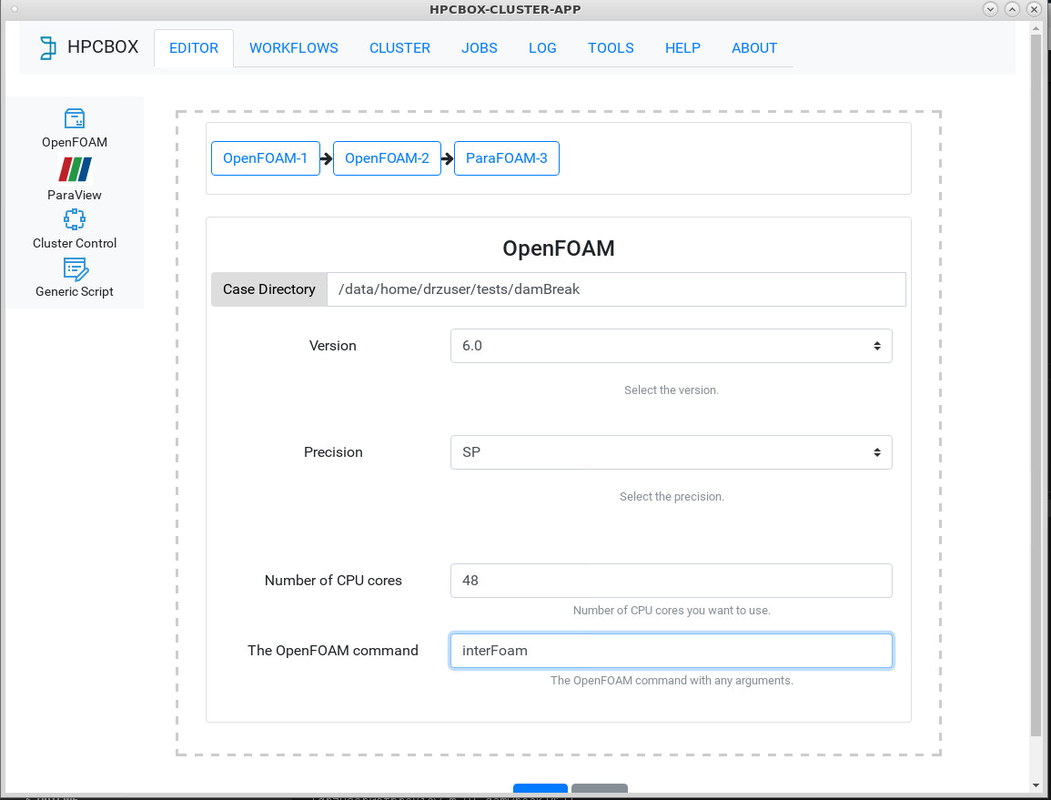
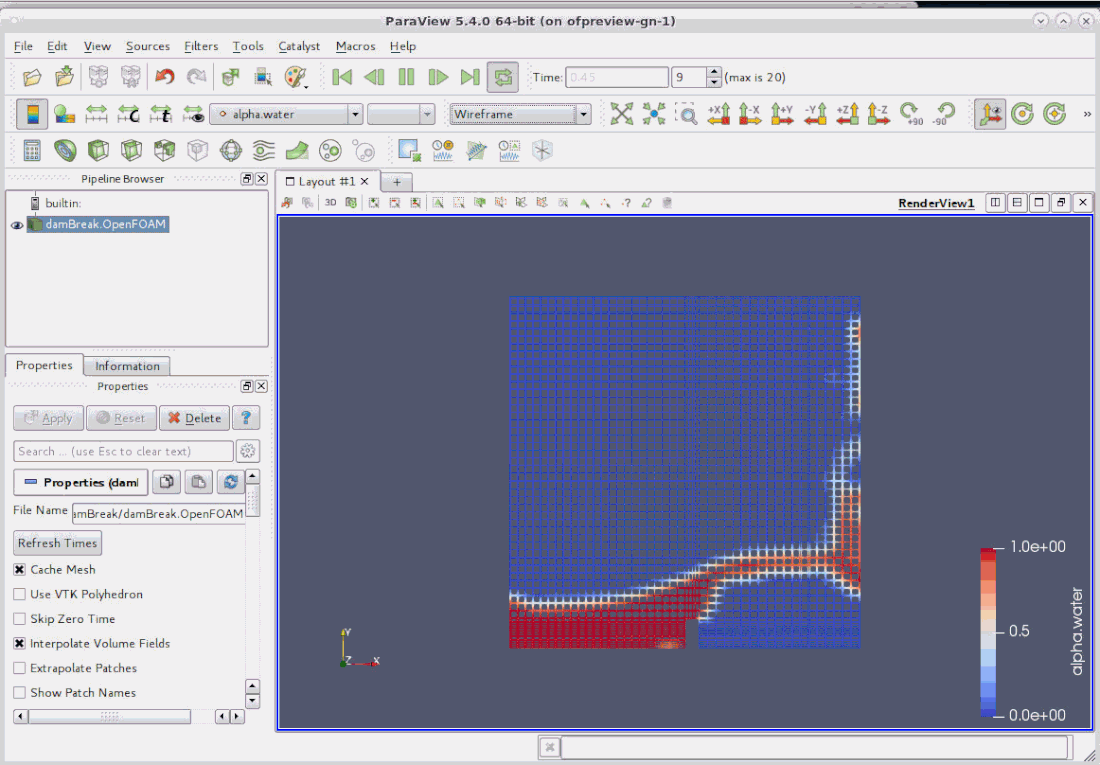
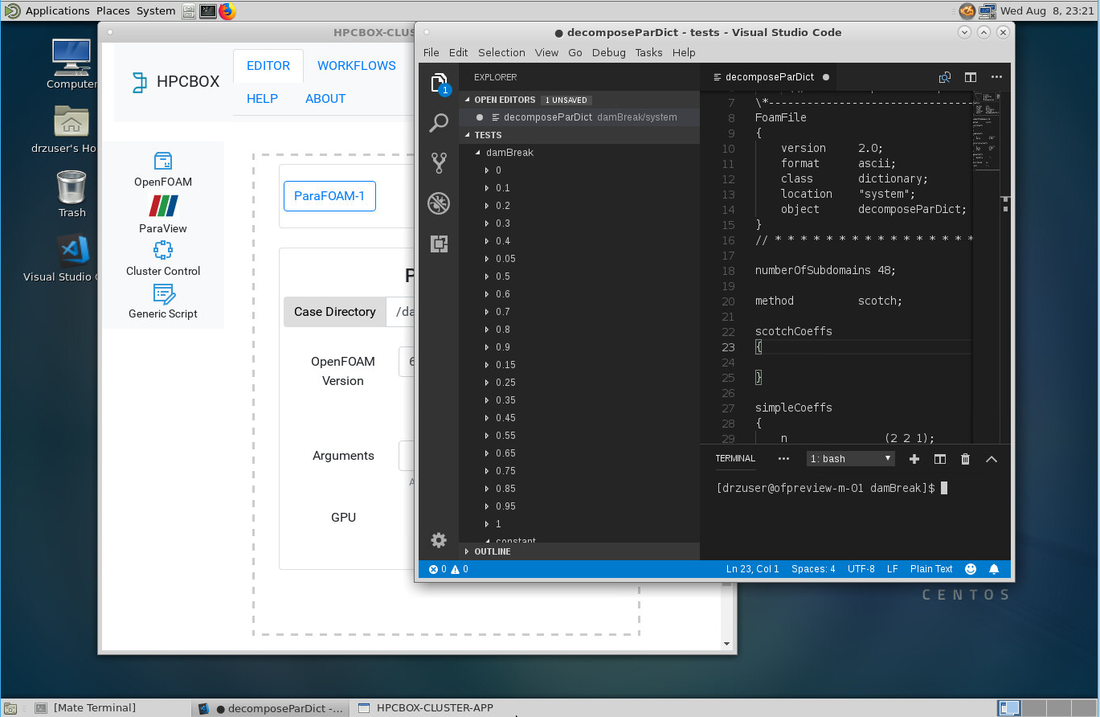
 RSS Feed
RSS Feed